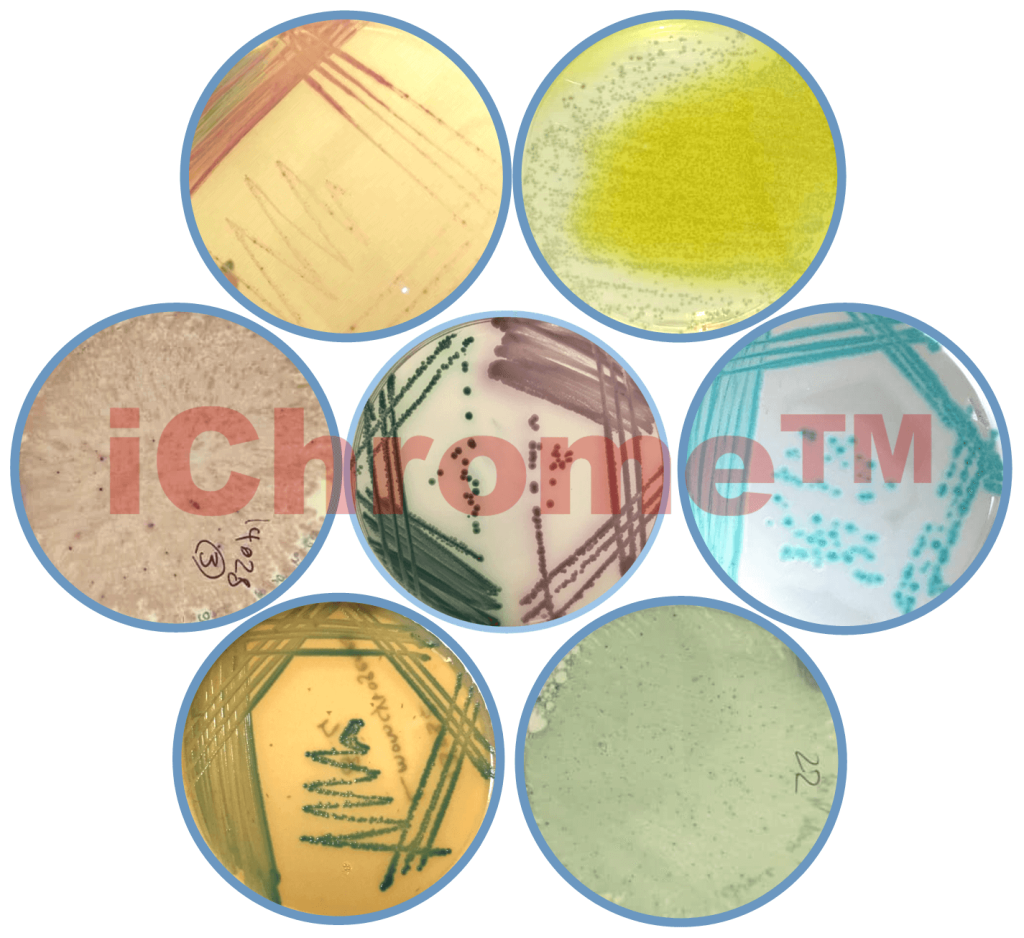Culture media are used for the growth, isolation, and identification of microorganisms. They generally contain nutrients such as peptones, amino acids, meat and yeast extracts, minerals and vitamins, solidifying agents (such as agar), and identification systems.
Traditional culture media identification systems are a combination of carbohydrates, amino acids, and glycosides (such as esculin) with an indicator system. The addition of chromogenic and fluorogenic enzyme substrates as a diagnostic system has led to the development of a number of separation media. Chromogenic and fluorogenic enzyme substrates consist of a connected part called a chromophore or fluorophore, which is the identifiable part for the enzyme, such as carbohydrates, amino acids, or phosphates. Enzymes produced by specific microorganisms cut the target chromogenic and fluorogenic substrates, releasing chromophores or fluorophores that indicate the microorganism’s growth or culture medium with the color or fluorescence created.

Two groups of chemical compounds used in culture media are indole derivatives and 4-methylumbelliferyl substrates. The latter is soluble in water and can only be identified with UV light. The use of highly sensitive fluorogenic substrates in solid media is limited because they are dispersed in the medium and UV light is essential for identification. Indole derivatives are often non-diffusible and form a chromophore precipitating in colonies. Ultimately, working with chromogenic colonies is practical in microbiology.
Chromogenic culture media, which are used to identify pathogenic microorganisms, are more attractive because they enable rapid identification of microorganism characteristics, including pathogenic bacteria, at a low cost. Adding inhibitory supplements to these chromogenic media, such as antibiotics, can control most or all contaminations that occur in the tested sample.

Characteristics of chromogenic culture media
These culture media are used for simple and rapid identification of bacteria using chromogenic substrates. Chromogenic mixtures contain chromogenic substrates such as Salmon-Gal, X-Gal, X-Glucuronide, etc. Special enzymes produced by bacteria cleave these substrates and lead to different colored colonies of bacteria.
Reliable clarity with distinct color Faster results, quicker access to results compared to traditional methods, with some media providing confirmation results within 24 hours. More than one organism can be identified in a single medium. In this case, the cost of identification is lower.

- The simplicity of reading color reactions without the need for special equipment or skills. Chromogenic media eliminates the need for subculture and further biochemical tests to identify pathogenic agents. The virulence of a specific microorganism can be simultaneously identified and differentiated. Chromogenic media has sufficient and suitable nutrients to recovery damaged microorganisms with difficult growth. The results are stable and reliable, with a fixed colony color and specific results obtained through enzyme activity using these media.

